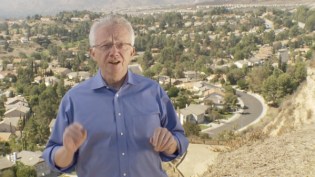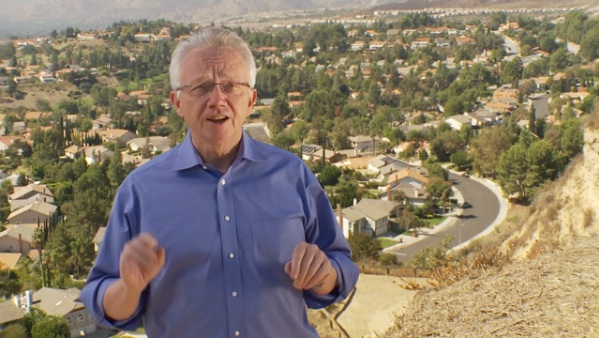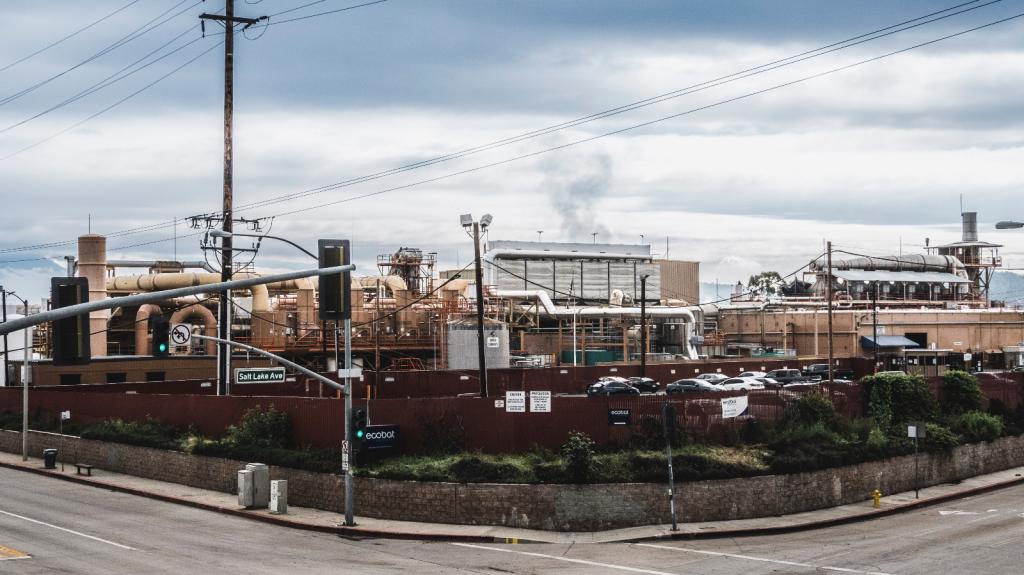
Richard Jackson, from the PBS miniseries, Designing Healthy Communities.
This story is excerpted from a longer piece in the Chronicle of Higher Education.
Researchers can have revelatory moments in remarkable places — the African savannah, an ancient library, or the ruins of a lost civilization. But Richard J. Jackson’s epiphany occurred in 1999 in a banal American landscape: a dismal stretch of the car-choked Buford Highway, near the Centers for Disease Control and Prevention (CDC) in Atlanta.
Jackson, who was then the head of the National Center for Environmental Health at the CDC, was rushing to get to a meeting where leading epidemiologists would discuss the major health threats of the 21st century. On the side of the road he saw an elderly woman walking, bent with a load of shopping bags. It was a blisteringly hot day, and there was little hope that she would find public transportation. At that moment, Jackson says, “I realized that the major threat was how we had built America.”
His center had already been dealing with problems that he suspected had origins in the built environment — asthma caused by particulates from cars and trucks, lead poisoning from contaminated houses and soil, and obesity, heart conditions, and depression exacerbated by lack of access to fresh food, stressful living conditions, long commutes, and isolating, car-oriented communities.
Treatments could come in the form of pills, inhalers, and insulin shots, but real solutions had bigger implications. “More and more, I came to the conclusion that this is about how we build the world that we live in,” he says.
Jackson, who is now a professor and chair of environmental health sciences at the University of California at Los Angeles’ School of Public Health, has since become one of the leading voices calling for better urban design for the sake of good health.
In 2001, while still at the CDC, Jackson was a coauthor of an article published by Sprawl Watch Clearinghouse that contended that poorly planned built environments had adverse effects on air quality, physical activity, and public safety, among other things. Not everyone has embraced his message. The National Association of Home Builders responded that the article had flimsy scientific foundations, and a dozen members of Congress wrote to the CDC, calling for Jackson’s head. (Jackson left the CDC in 2004, after the Bush administration appointed new members to his advisory committee who had anti-regulatory backgrounds or ties to energy or chemical industries.)
Jackson acknowledged that his assertions were based more on intuition than research, but he pushed ahead, following up with a book-length treatment called Urban Sprawl and Public Health: Designing, Planning, and Building for Healthy Communities, written with Howard Frumkin, now the dean of the School of Public Health at the University of Washington, and Lawrence Frank, a professor of urban planning at the University of British Columbia. Since then, many studies have come out linking urban design to health, confirming some of the assertions Jackson and other early researchers had made.
Jackson recently released another scholarly book, an edited collection called Making Healthy Places: Designing and Building for Wealth, Well-Being, and Sustainability. He is also the host of a four-part miniseries called “Designing Healthy Communities,” which will air on public television starting this week in some markets. (Find a listing here.)
The work of Jackson and researchers with similar interests has been pithily condensed to a variation of this eye-grabbing headline: “Suburbia Makes You Fat.” But his focus in Designing Healthy Communities is actually broader than that, with as much emphasis on our need for social connection and beauty as on our need for physical activity.
The series features efforts near Denver and Atlanta to redevelop old rail lines and abandoned malls into walking paths and mixed-use areas. The Italian-American town of Roseto, Pa. — with its strong social ties, backyard gardens, and walkable streets — is held up as a lost “Shangri-La,” a community that had virtually no heart disease in the middle of the 20th century (but has since come to resemble the rest of the nation).
Having begun his medical career in pediatrics, Jackson is particularly worried about the effects that bad design and polluted environments might have on children, who suffer from spiking rates of obesity and asthma. “I think that in many ways our generation is guilty of generational child abuse,” he says at the opening of one segment.
But living up to Jackson’s ideals is not easy, given the current car-dependency of the American landscape. Even Jackson’s own living situation is a conundrum. He works in Los Angeles, but his wife and children live and work in the Bay Area, and he travels up to them twice a month. He and his wife are looking for a home near Berkeley, but they are finding the search difficult.
“Homes that are in attractive, walkable areas, where you can meet your life needs without getting into a car, are selling at an absolute premium,” he says. “If I wanted to live in a car-dependent area with a great big house, those would be quite affordable.”



